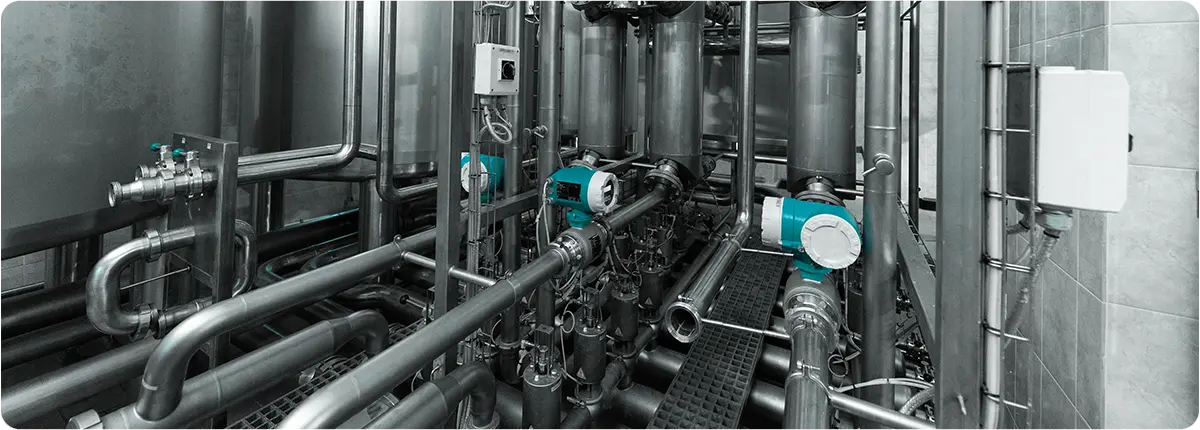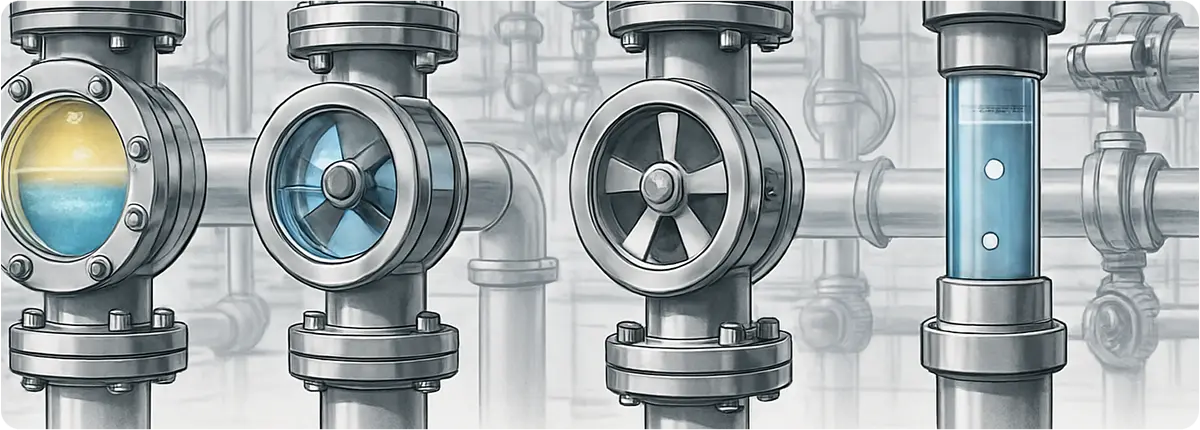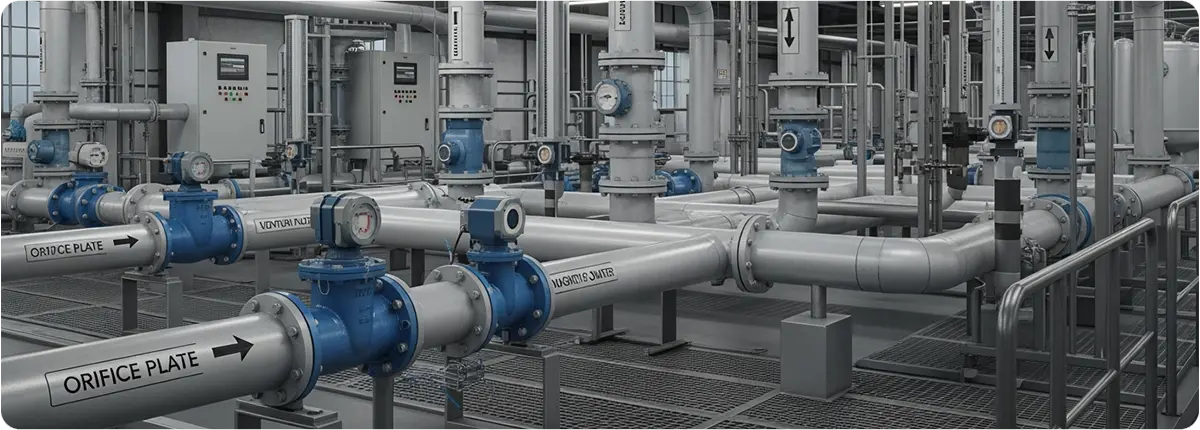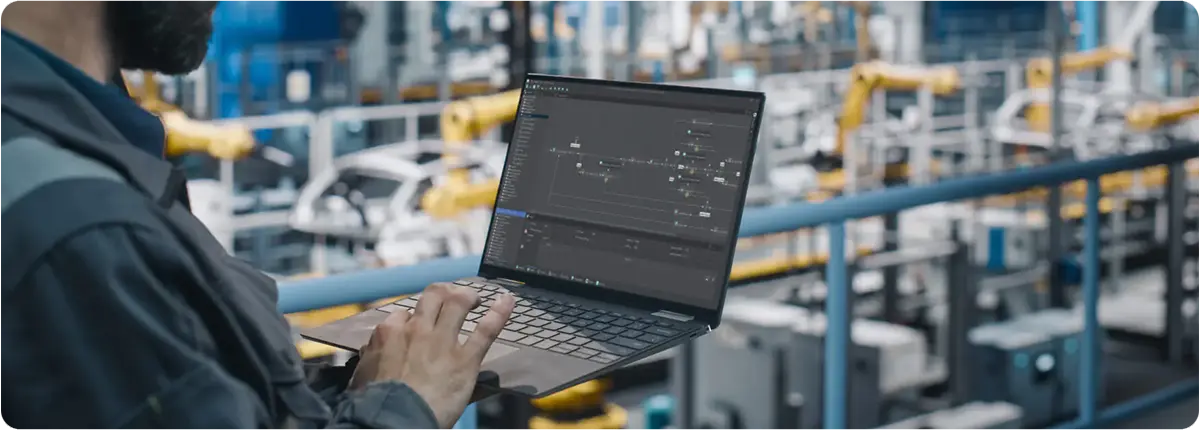Turbine flowmeters are highly accurate instruments that measure flow by detecting the rotational speed of a turbine placed in the flow path. As the fluid moves through the pipe, it spins the turbine, and the speed of rotation is proportional to the flow velocity. They are widely used in oil, natural gas, chemical, food, pharmaceutical, and water management industries.
WORKING PRINCIPLE
The fluid flow turns the turbine rotor, and its rotational speed corresponds to the volumetric flow rate. Magnetic or optical sensors detect the rotor’s movement and convert it into an electrical signal.
Basic equation:
Q = k · N
Where Q is the flow rate (m³/s), k is the calibration constant, and N is the number of turbine revolutions per unit time.
STRUCTURAL FEATURES
- Material: stainless steel, aluminum, or special alloys
- Rotor: aerodynamically designed to minimize resistance
- Bearings: sapphire or tungsten carbide for long life and low friction
- Output: Pulse signal, 4-20 mA, HART, Modbus
ADVANTAGES AND LIMITATIONS
Advantages:
- High measurement accuracy (0.2% – 0.5% error)
- Wide flow measurement range
- Suitable for both gases and liquids
Limitations:
- Accuracy decreases with viscous or contaminated fluids
- May be unstable at very low flow rates
- Requires periodic calibration and maintenance
APPLICATION AREAS
- Fuel measurement in oil and gas industry
- Natural gas consumption monitoring in power plants
- Flow control in water management and treatment facilities
- Measurement of liquid raw materials in food and pharmaceutical industries
STANDARDS AND CALIBRATION
- ISO 9951: Turbine meters for gas flow measurement
- AGA reports: Standards for natural gas measurement
- API and ASME compliance
- Regular calibration required to maintain accuracy
CONCLUSION
Turbine flowmeters provide exceptional accuracy and reliability in industrial flow measurement. With digital communication protocols, they can be seamlessly integrated into SCADA and automation systems, playing a vital role in process optimization and monitoring.



